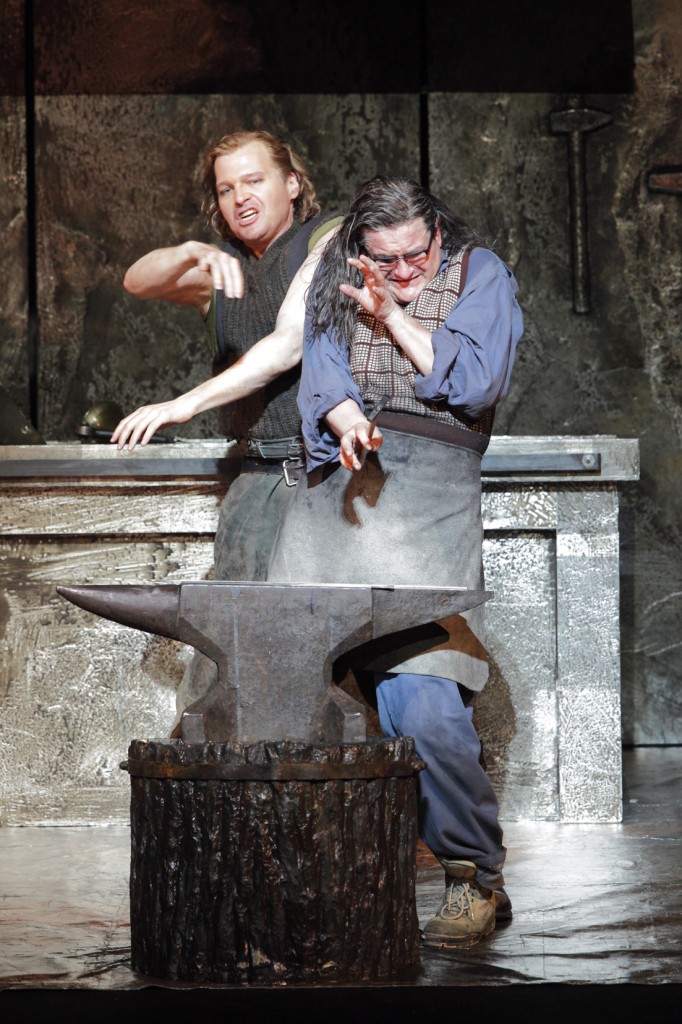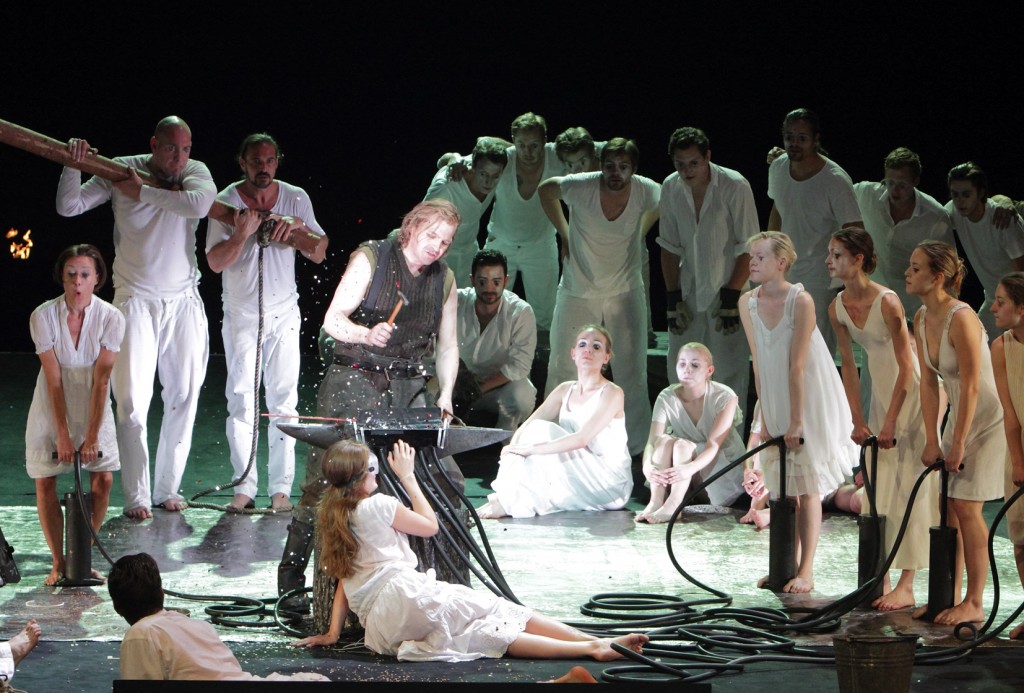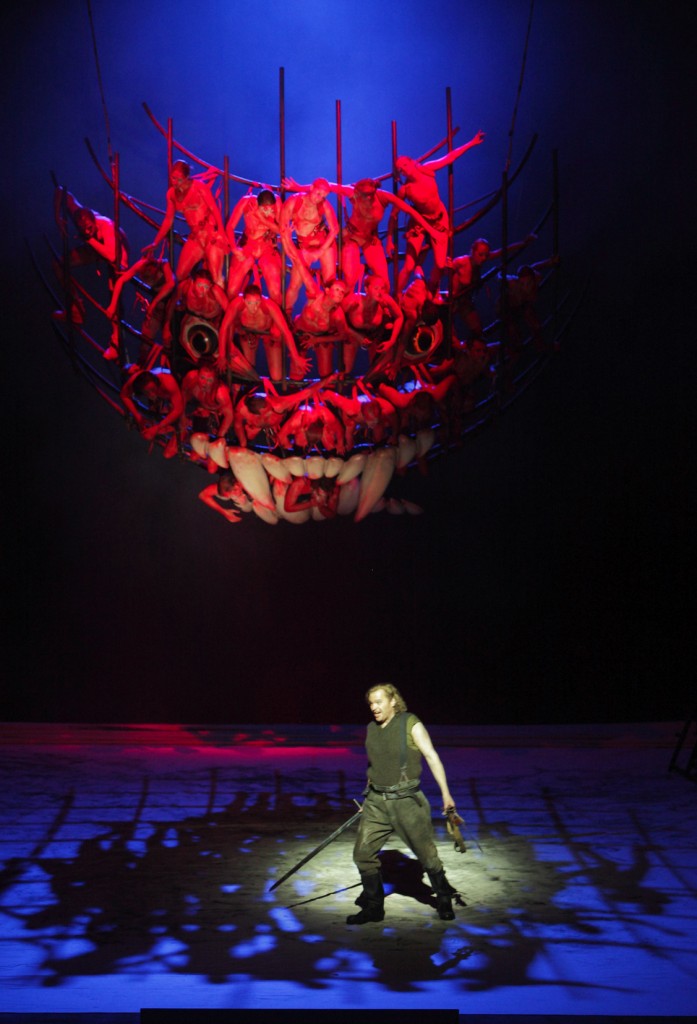 Germany R. Wagner, Siegfried: Soloists, Bavarian State Orchestra, Kent Nagano (conductor), Bavarian State Orchestra, 3.6.2012 (JFL)
Germany R. Wagner, Siegfried: Soloists, Bavarian State Orchestra, Kent Nagano (conductor), Bavarian State Orchestra, 3.6.2012 (JFL)
Direction: Andreas Kriegenburg
Sets: Harald B.Thor
Costumes: Andrea Schraad
Lighting: Stefan Bolliger
Choreography: Zenta Haerter
Dramaturgy: Marion Tiedtke, Olaf A. Schmitt
Cast
Siegfried: Lance Ryan
Mime: Wolfgang Ablinger-Sperrhacke
Brünnhilde: Catherine Naglestad
Alberich: Wolfgang Koch
Wanderer/Wotan: Thomas J. Mayer
Fafner: Rafal Siwek
Erda: Jill Grove
Woodbird: Anna Virovlansky (+ Anna Ressel)

| The Munich Ring Cycle on S&H:
Das Rheingold Die Walküre Siegfried Götterdämmerung |
I am taking in Andreas Kriegenburg’s Ring at the Bavarian State Opera piecemeal. Das Rheingold in February (review here), now Siegfried. Die Walküre and Götterdämmerung still awaiting. There’s a lot to look forward to with those two remaining operas, because much like with Das Rheingold, there is plenty good in Siegfried – and more promise, still. For one, Kriegenburg’s Siegfried is funny and adorable, childlike but not childish. When did you last feel that way about a Wagner opera?!
Kriegenburg’s concept of using bodies as the basic building blocks for Wagner’s world continues. But where he puts them to more metaphorical use in the first installment (depicting with them the Rhine, forces of earth, Valhalla), Siegfried sees them employed more literally, with up to 50 extras populating the stage. These little helpers, spirited trolls of childlike disposition and whim, spell out and underline the actions and interactions of Mime and Siegfried and the humor therein. In little brigades they melt down Notung via paper shredder, pump oversized bellows, rummage about in large tubes to symbolize the forge’s ventilation, and rhythmically pump (actual) air into the tinsel-filled anvil every time Siegfried re-strikes his sword. The happy sparks fly high and wide: glitter and be gay, indeed!
Act 1 becomes their playground and Siegfried – the most truly humorous of Wagner’s operas—attains a droll, exuberant air. It’s terribly good of Kriegenburg to let it out, to strip away the pathos, the awfully serious layers and layers of Wagnerian self-importance in this Ring. Elsewhere the artistic-acrobatic use of suspended extras—as trees for the forest bird to fly about or as a looming, oversized-dentures-wielding Fafner-as-worm—looked more like La Fura dels Baus, but with Kriegenburg this was part of a concept and a touchingly personal way to tell a story, not the-thing-itself, as is the case with La Fura dels Baus’ spectacular, maddeningly vapid Valencia Ring. A particularly neat touch: visual references to Das Rheingold, timed to the relevant leitmotifs during the elaborate Six-Questions scene of act 1. Only the magic fire around the rock was a visual disappointment: 30 yards of illuminated cling-film looked more like the Rhine at sundown than an imposing fire.
I had never seen a Siegfried where the most lasting impression was made by the little woodbird—until now. And that’s not damnation of the major roles by way of praising a lesser part. In fact Lance Ryan’s Siegfried—powerful, enthused, believably youthful and untiring—headed a fab-four along with Wolfgang Ablinger-Sperrhacke’s stupendous greasy Mime, Catherine Naglestad’s gravely ravishing Brünnhilde, and Wolfgang Koch’s regal Alberich. But Anna Virovlansky and her physical manifestation Anna Ressel (who danced along in unison with a little self-balancing birdie on a stick) were so charmingly staged (and well sung) that it, she, or they absolutely made the second act. Jill Grove and Rafal Siwek (Erda, Fafner) had less opportunity to show off and while Thomas J. Mayer as Wanderer/Wotan had that opportunity, he didn’t make use of it. He performed well enough, but the voice—even as it opened up in the third act—was underpowered next to his commendable colleagues. Kent Nagano led a seamless, gorgeous account of the score that lends itself less to the elegant-Italianate style he had displayed Das Rheingold. Free of actual or artificial highlighting, Nagano reigned over an orchestra that exuded perfection even more than it did enthusiasm.
Not every Wagnerian will appreciate Kriegenburg for turning the Ring into entertainment, toying at the edge of naïve and goofy. But most attendees seemed reasonably happy and since it wasn’t opening night, and the cast was in superb form, there was only cheering, no jeering after five and a half hours.
Jens F. Laurson

